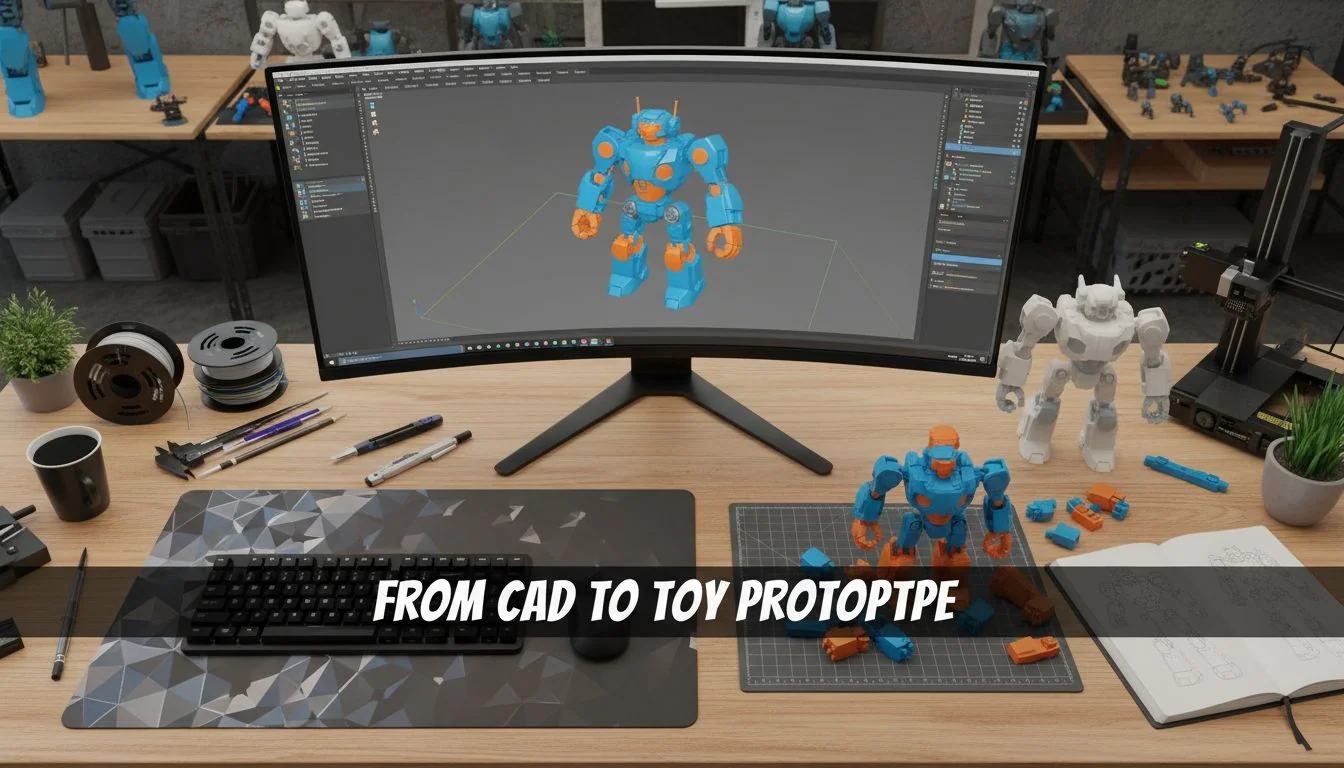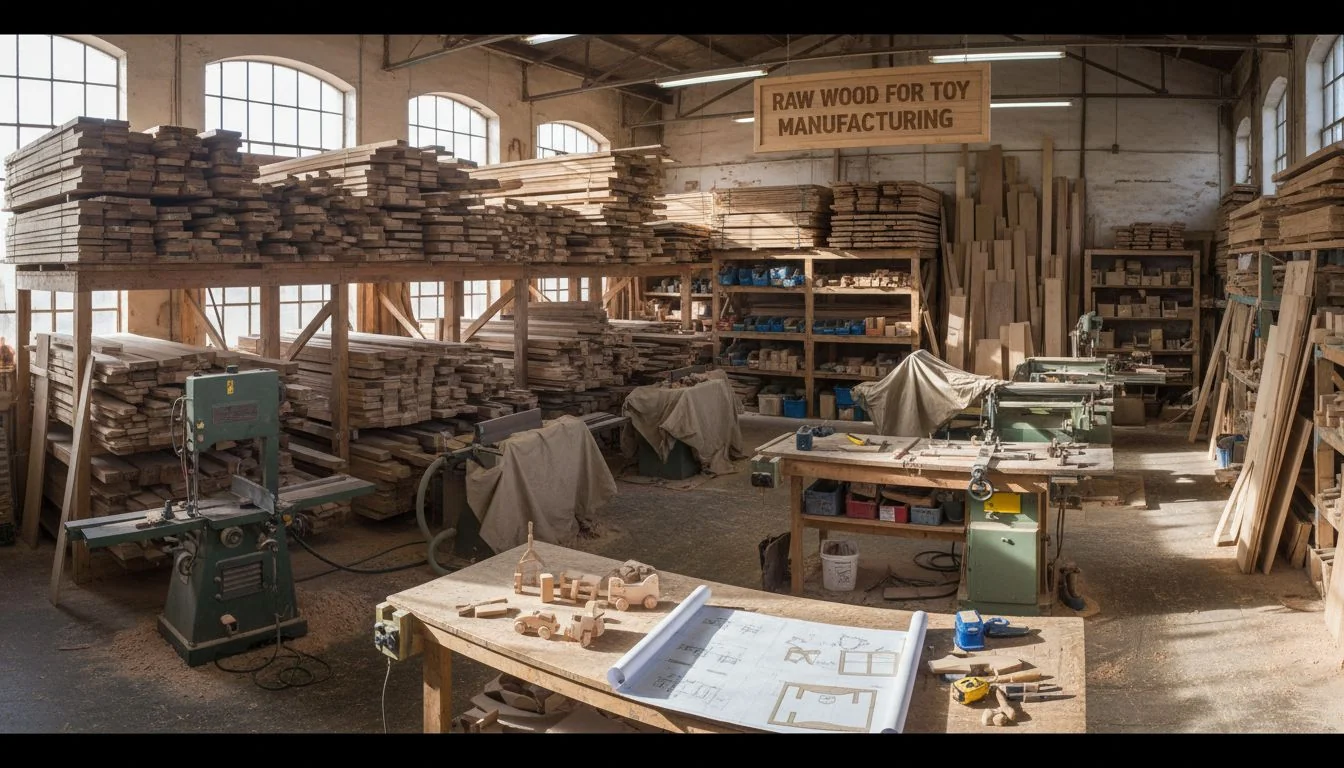How Can You Manufacture High-Quality Wooden Alphabet Toys for Early Literacy?

You want to create a beautiful wooden toy line. But you are worried about overseas manufacturing risks[^1], high costs, and quality control issues that could ruin your project.
To manufacture high-quality wooden alphabet toys, you must focus on four key areas. First, create a design optimized for manufacturing. Second, select the right wood and child-safe finishes. Third, understand the CNC machining process[^2]. Finally, find and vet a reliable Chinese manufacturer who understands your quality standards.

I see many designers like you, Jacky, full of great ideas for new products. You have the design skills, but turning that design into a physical product, especially from halfway across the world, can feel like a big jump. You might be thinking about a new product line, maybe even something like the "woddlontoy" brand I've seen gain popularity. The principles are the same whether you're making a complex electronic housing or a simple wooden block. It's all about understanding the manufacturing process. Let's break down how you can take your idea for wooden toys and turn it into a successful, profitable product.
All wooden toys sold in the EU must be CE marked, indicating they meet EN-71 safety standards.True
The EN-71 standard is a set of European safety requirements for toys, covering mechanical properties, flammability, and chemical migration.
Beechwood is the cheapest wood for making toys.False
While popular, beechwood is a hardwood and is often more expensive than softer woods like pine or rubberwood, which are also commonly used for toys.
How Can You Custom-Design Wooden Alphabet Toys with a China Manufacturer?
You have a perfect design in your CAD software. But you are concerned that a factory overseas will misunderstand your vision, leading to expensive mistakes and long delays.
To customize toys with a Chinese manufacturer, you must provide a detailed technical package[^3]. This includes 3D CAD files, material specifications, paint and finish details, required safety certifications, and packaging designs. Clear communication and approving physical samples before mass production are absolutely essential steps.

I remember a client who sent a simple JPEG image to a factory and asked for a quote. The samples they got back were a disaster. The size was wrong, the wood was splintered, and the color was completely off. They wasted two months and hundreds of dollars. This is a common story. You are a professional designer, so you know the importance of detail. The key is to transfer the details from your brain and your computer into a format the factory can understand perfectly. Let's look at how to do that.
Preparing Your Technical Package
Your tech pack is the blueprint for your product. It must leave no room for interpretation. Think of it as the ultimate instruction manual for the factory.
- 3D/2D Files: Provide STEP files for 3D models and detailed 2D drawings with all dimensions and tolerances.
- Bill of Materials (BOM): List every single component, from the type of wood to the specific screws or magnets used.
- Color, Material, Finish (CMF): Specify exact Pantone colors for paints. Define the wood type (e.g., Grade A Beechwood). Describe the finish (e.g., "matte, non-toxic water-based lacquer").
Communicating with the Factory
Clear communication is more than just language. Use simple English. Use lots of pictures and diagrams. Label your drawings in both English and simplified Chinese if you can. A video of you explaining the 3D model can also be very helpful. Always confirm that they have understood your instructions by asking them to repeat the key points back to you.
The Sampling Process
Never, ever skip the sampling stage. This is your chance to hold the product in your hands and check everything.
| Sample Stage | Purpose | What to Check |
|---|---|---|
| First Sample | Proof of concept | Dimensions, basic shape, material feel |
| Pre-Production Sample | Final confirmation | Color, finish, assembly, packaging |
| Top of Production Sample | Quality check | A random item from the first mass production run |
This process ensures the final product matches your vision exactly.
A Bill of Materials (BOM) is only necessary for electronic products.False
A BOM is crucial for any manufactured product with multiple components, including simple toys, to ensure all parts are sourced and assembled correctly.
Using Pantone color codes is the industry standard for ensuring color accuracy in manufacturing.True
The Pantone Matching System (PMS) is a universal color language that allows designers and manufacturers to communicate and reproduce colors consistently, regardless of location.
How Can You Buy Wooden Toys from China and Save Costs?
Your project needs to hit a specific price to be profitable. But you find that manufacturing costs are always higher than you expect, forcing you to make difficult choices.
You can save costs by optimizing your design for manufacturing (DFM). Also, choose cost-effective materials that are still safe and durable. Ordering in larger volumes and negotiating directly with a factory, not a middleman, will significantly lower your per-unit price.

Everyone wants to save money, but the real goal is to reduce cost without reducing value or safety. I've seen people try to save a few cents by using cheaper paint, only to have their entire shipment fail safety tests. That's not saving money; that's creating a disaster. The smart way to save costs happens long before production begins. It starts right on your computer, in your design file. As a designer, you have more control over the final cost than anyone else. Let's explore the key areas where you can be strategic.
Design for Manufacturability (DFM)
This is where your skill as a designer really shines.
- Simplify Shapes: Complex curves and intricate cuts require more CNC machine time, which increases cost. Can a curve be a straight line? Can you reduce the number of internal cuts?
- Reduce Parts: A toy made of two parts is more expensive than a toy made of one. Look for ways to combine elements without losing function.
- Standardize: Design your letters to use the same thickness of wood. This allows the factory to buy raw materials in bulk and simplifies the machine setup.
Material Selection and Supply Chain
The wood you choose has a big impact on cost. You also need to know who you are buying from.
| Factor | Impact on Cost | My Advice |
|---|---|---|
| Wood Type | High | Beech and Maple are premium, hard, and expensive. Rubberwood and Pine are softer, more affordable, and still great for many toys. |
| Order Quantity | High | The price per unit drops significantly as your order volume increases. Always ask for quotes at several quantity levels (e.g., 1000, 5000, 10000 units). |
| Supplier Type | Medium | A trading company is easier to find but adds a markup. A direct factory offers better prices but requires more work from you to manage. |
For a designer like you, Jacky, working directly with a factory can be very rewarding. You get better prices and have a direct line of communication to the people actually making your product. It takes more effort, but the control you gain is worth it.
Larger order quantities always guarantee a lower per-unit cost.True
This is a fundamental principle of economies of scale in manufacturing. Higher volumes allow for bulk material purchasing, optimized production runs, and spreading fixed costs over more units.
Trading companies and factories offer the same level of technical support.False
Factories have engineers and technicians on-site who can provide deep technical feedback on design for manufacturability (DFM), while trading companies primarily handle logistics and communication.
Conclusion
Success in manufacturing wooden toys comes from smart design, clear communication, and strategic sourcing. By focusing on these areas, you can create high-quality, safe, and profitable products.
References
[^1]: Understanding manufacturing risks can help you mitigate potential issues and ensure a smoother production process.
[^2]: Learning about CNC machining can enhance your design and production efficiency, leading to better quality toys.
[^3]: A well-prepared technical package is essential for clear communication with manufacturers and successful product outcomes.
